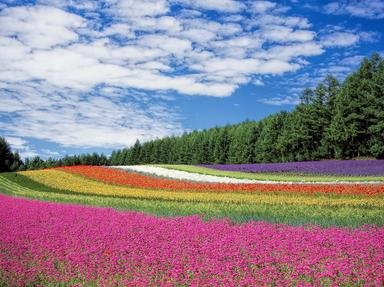Quiz Answer Key and Fun Facts
1. Delicate pink cherry blossoms are one of the undisputed symbols of Japan. What name is given to the ancient custom of organizing viewing parties to enjoy the transient beauty of these flowers?
2. With its plumage in elegant shades of grey and pink, what Australian bird - also known as the rose-breasted cockatoo - has also become a slang word meaning idiot or clown?
3. In Ancient Greece, the gorgeous shades of pink of the dawn sky were identified with the "rosy fingers" of which goddess, known for her many love affairs with mortal men?
4. Crisply dry or fruity sweet, rosé wines seem to have been created to enjoy during the spring and summer seasons. Which of these facts about the making of rosé wines is true?
5. The title of Edith Piaf's signature song, "La vie en rose", aptly translates the title of this quiz. What Jamaican singer, actress and model - who also appeared as a villain in a James Bond movie - released an innovative cover of this song in 1977?
6. Pink diamonds are the among the rarest and highest-prized of gemstones. One of the largest, called Noor-ul-Ain, is the centrepiece of the tiara of the same name - part of the crown jewels of what country in Western Asia, once a great empire?
7. In the 18th and 19th century, pink was worn by both men and women, and in the Victorian era young boys often wore pink clothing.
8. The stunning Lake Hillier, depicted in the photo, is one of the pink salt lakes found in various parts of the world. To what do these bodies of water usually owe their striking colour?
9. The vibrant shade of pink that appears in the photo was christened "shocking pink" by which influential Italian fashion designer, active between the 1920s and the 1950s?
10. Nicknamed the "Pink City", Jaipur is the capital of which large northern Indian state - whose name means "Land of Kings"?
Source: Author
LadyNym
This quiz was reviewed by FunTrivia editor
agony before going online.
Any errors found in FunTrivia content are routinely corrected through our feedback system.
